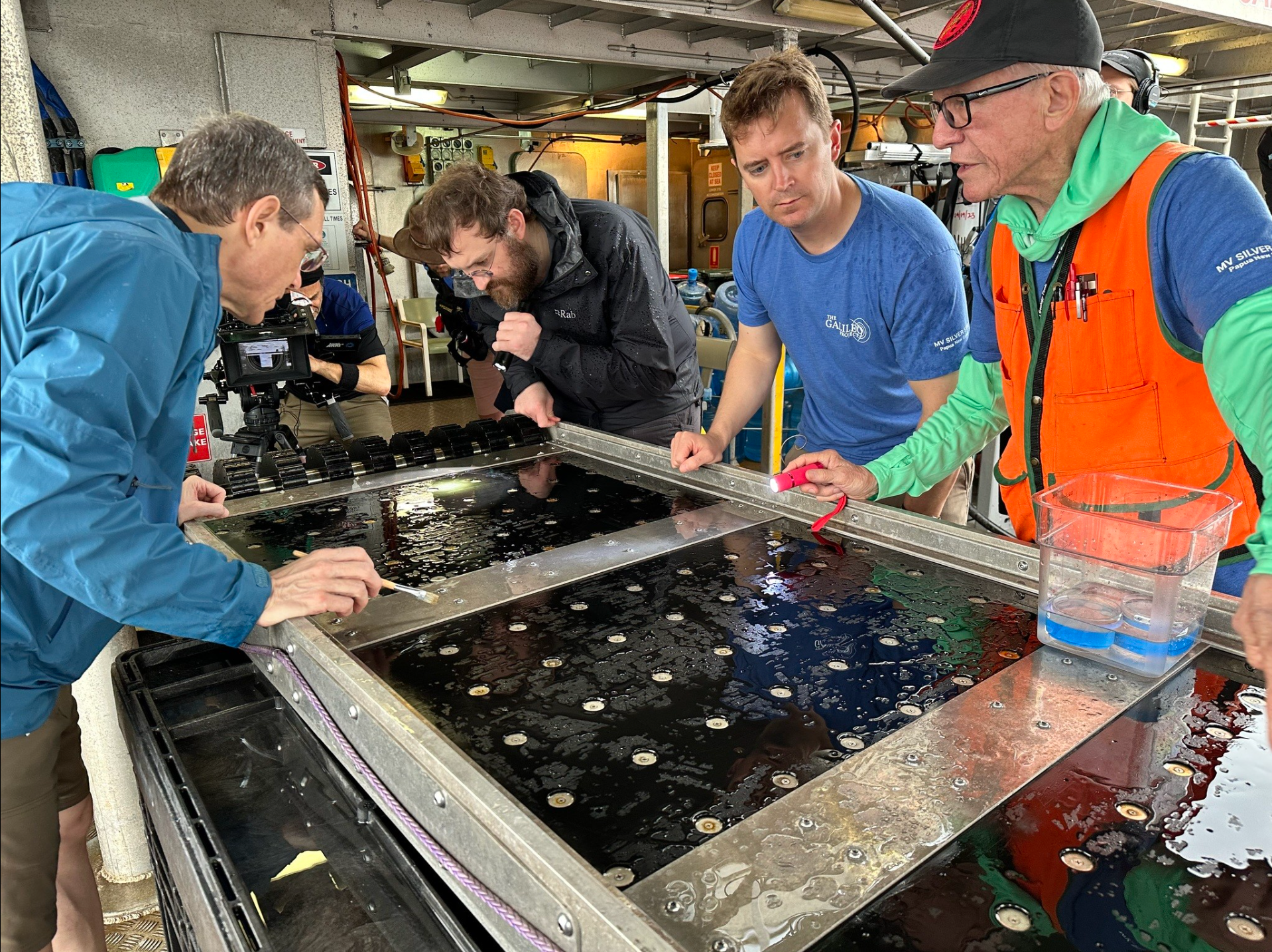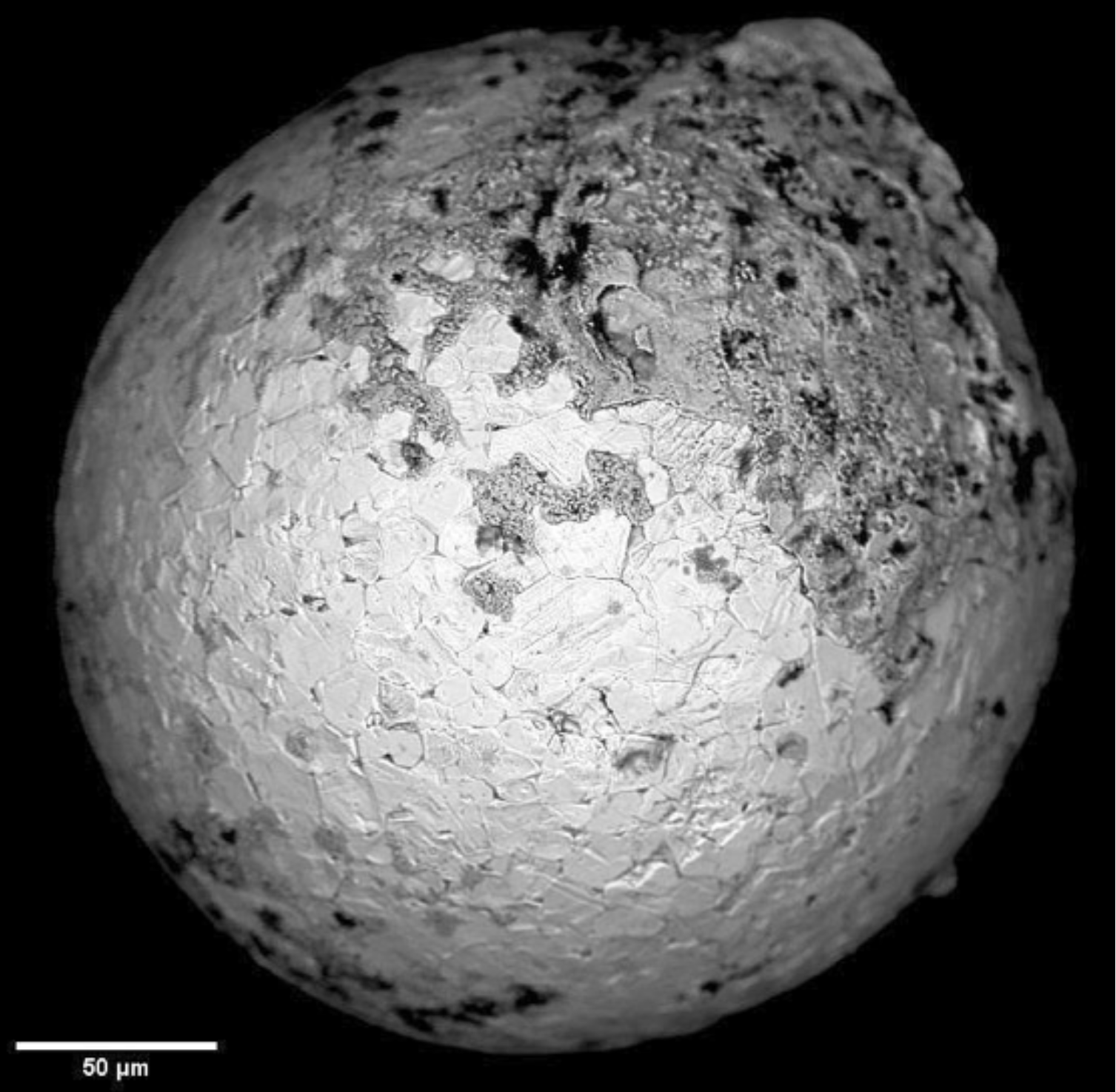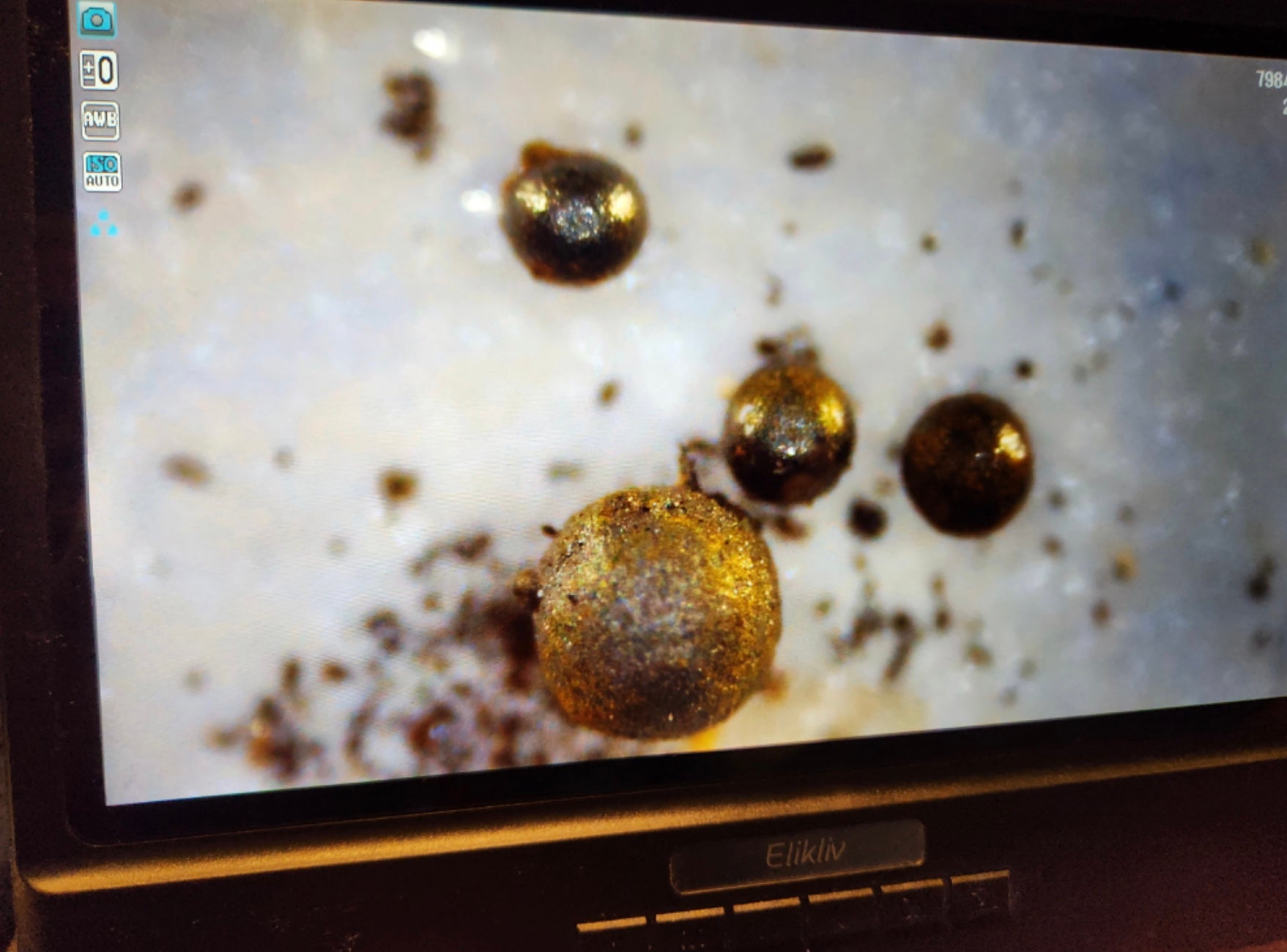
Tiny metallic particles dredged up from the seafloor in the South Pacific could be the first substantial bits of material ever found from outside the solar system, according to test results reported in a scientific paper submitted last week by Harvard University astrophysicist Avi Loeb and his team. It is a dramatic claim of a major finding that could help theorists better understand planetary formation processes. But other scientists say that these preliminary results are not sufficient to prove these pinhead-sized spheres are really interstellar, and that further lab tests are needed to settle the matter.
But virtually everyone agrees that it’s possible to settle the question definitively, and that the claim is important enough that every effort should be made to nail down the answer. And many applaud Loeb’s risky and difficult mission to do the hard work necessary to find and recover the material needed to make such an answer possible.
Searching the seafloor
The material, presently being analyzed in a Harvard lab, was scooped up off the Pacific seafloor near Papua New Guinea in June. The search team prepared a sled covered with powerful magnets and dragged it along the ocean bottom behind a boat that Loeb had chartered for the project. The search was aiming to find remnants of a meteorite whose reentry was detected by US government sensors as a bright fireball on Jan. 8, 2014, and which Loeb and his student Amir Siraj had determined to have come from outside the solar system, based on the speed of its entry into Earth’s atmosphere. More than 700 spherules, mostly less than one millimeter across — about the size of a pinhead — were meticulously recovered from the mass of material picked up by the sled and have been undergoing analysis ever since the team returned to the US.
Loeb and his co-authors have written a paper on their initial test results and submitted it to the journal Ocean Sciences for peer review. They also posted it to the online arXiv preprint server, as is common practice in the physical sciences, on Aug. 29. The paper cites results from a mass spectrometer, an instrument that can determine the relative abundances of the elements within the spherules. The team says that of 57 spherules tested so far, five of them show a distinctive and quite anomalous composition.

By comparison with typical meteoritic material, these five spherules have highly enhanced levels of several elements, especially beryllium, lanthanum, and uranium, with concentrations as much as a thousand times greater than in typical meteorites. Loeb and co-author Stein Jacobsen, a Harvard cosmochemist who did the mass spectroscopy measurements, dubbed this composition BeLaU after those elements.
After running the tests on those samples, “Jacobsen came to me and said, ‘This is something new, I haven’t seen it before’,” Loeb says. It was a composition that Jacobsen had never seen before in either meteorites or terrestrial sources. The unusual abundances, Loeb says, could be accounted for if the material came from a planet with a magma ocean — a planet so hot that its outer layers consisted of molten rock, and fragments of this material were dispersed through space.
Alternatively, it could be material produced in a supernova explosion, or possibly a collision of two neutron stars, either of which could theoretically produce such an unusual elementary enhancement. Or, Loeb and his co-authors suggest in the paper, it could be remnants of a technological object produced by intelligent aliens — a possibility, however remote, that was one of Loeb’s major motivations in searching for the material in the first place.
An extraordinary claim
Even hinting at that possibility is enough to create a backlash from some other astronomers, who feel that Loeb and his colleagues are going beyond what their evidence can so far support. “I object mightily to that language,” says Andrew Westphal, associate director of the Space Sciences Laboratory at the University of California, Berkeley. “There is absolutely nothing in any of these data that give any hint that this is some artifact technological object. … It does their credibility no good to even talk about this.”
But Westphal is also skeptical of the claim that the samples come outside the solar system at all. He says his main objection is that their comparison is based on known meteorites and material brought back by a few space missions. The assumption is that this is representative of the entire solar system, and “that just is not true.” Meteorites, he says, are heavily dominated by inner solar system material, and a few from Mars and the Moon. “We have no samples, for example, from Venus or Mercury, that we know of,” he says. So the claim that it must be extrasolar material because we’ve never seen anything like it has “a fundamental problem, because there can always be some body in the solar system from which this originated that we don’t have any samples of in the laboratory,” he says.
Others are more open to the possibilities, and welcome the fact that Loeb, Jacobsen, and their team are continuing their work and that answers will be forthcoming. Loeb says he welcomes comments and criticism that are based on the science itself.
That’s why, he says, he wanted to put out these results now, even though less than 10 percent of the recovered spherules have been tested so far. “My rationale was, let’s put the 10 percent analysis out, so that we can get feedback from the community, because maybe we are missing something.” Because the technique used for their mass spectrometry tests destroys most of the material tested, “if we were to analyze a major fraction of these spherules, we would lose them for further analysis,” he says. In the meantime, “I want to know if there are any comments or recommendations or questions the community has, and then we can correct our analysis accordingly.”
Loeb says that with much of their collection of material still intact, “we can still share some spherules with others so that they can check that they get the same answer. I just want to do it correctly.”
Isotopes — a potential smoking gun?
Westphal offers one suggestion: Measure the ratios of oxygen isotopes — forms of the same element but with varying numbers of neutrons — in the suspected extrasolar spherules. “Their claim that they’re extrasolar is really easy to test,” he says. Oxygen isotope ratios are remarkably uniform across all bodies in the solar system, varying by only parts per thousand, but dramatically different in material outside it, with variations a hundred times greater. The tiny samples collected by Loeb’s team are “giant” compared to microscopic materials that he routinely deals with, he says, so such measurements would be easy to do. If the spherules really are extrasolar, he says, “that would really be the smoking gun.”

Don Brownlee, an astronomer at the University of Washington in Seattle who specializes in analysis of extraterrestrial materials, has a similar suggestion. Pointing out that one of the unusually enhanced components of the spherules was uranium, he says, “the simple check would be, if it’s uranium from outside the solar system, it will definitely have a different ratio of U-235 to U-238, because these two isotopes have different half-lives … This is something people measure all the time because they’re trying to detect differences between natural uranium and something that’s been enriched for making bombs and so forth.”
Such isotopic analyses are routine, Brownlee says, and “if they can find some significant isotopic anomalies, they should be able to absolutely prove that this is from outside the solar system.”
And if the material really is extrasolar, he says, “there’s two possibilities. One is that they’re stuff like comets and asteroids that got ejected from other planetary systems, or they’re spacecraft that somehow failed and ended up crashing in the solar system.” Either way, it should be possible to tell the difference, he says.
Brownlee, widely known for his somewhat contrarian view that advanced life is extremely rare in the universe, concedes that he could easily be proved wrong. “If you found something somewhere in the solar system that you could prove was extraterrestrial, and it was an exotic material that could be used to make spacecraft, then I think that would be a convincing thing.” For example, materials like refined aluminum or titanium do not occur naturally but are widely used in our spacecraft — and such materials “will last forever” in space, he says.
Ben Weiss, a professor at MIT who specializes in analyzing meteoritic material, says he admires Loeb’s persistence in carrying out this difficult recovery of material. “What’s cool about what he’s doing is he’s trying to find the fragments of a meteor. People don’t do that very often. If you could even find meteor fragments at the bottom of the ocean from any observed meteor, that’s a major advance in our ability to recover extraterrestrial material, and a big challenge. … That’s already a pretty big thing to try, an ambitious thing, whether they’re extrasolar or not.”
More to come
In addition to the ongoing debate over the recovered samples, there are also lingering questions over the nature of the meteor. Some scientists are skeptical that the object that entered the atmosphere in 2014 originated from outside of the solar system in the first place. Loeb and Siraj’s analysis rests on velocity data from a US government network of sensors designed to detect missiles. The U.S. military sent a letter supporting the claimed velocity from the network in 2022. But some scientists say that the fact that the underlying data remains classified undermines the claim that the object had an interstellar velocity and make its actual path uncertain.
Loeb and his team point to the fact that spherules on the seafloor were more heavily concentrated within the expected landing zone of the observed meteor than in other nearby regions as additional evidence that they came from the meteorite in question, but Weiss says “it would be nice to have some more statistical tests here, some quantitative measures” to document the significance of the increased concentration.
Weiss says that he’d prefer to wait until the paper passes peer review before commenting in detail, because analyzing the paper’s claims as if he were a reviewer would take days of detailed study. “I’m expecting that this is just the beginning” of a long process of testing and debate, he says, as Loeb and his team continue their analysis.
George Flynn, an astrobiophysicist at the State University of New York at Plattsburgh, says that “if they are interstellar, they’re the first macro samples of interstellar material available on earth for study, and that would be a tremendous claim.” But, he says, “they need isotopic evidence. That’s the one thing everybody will accept. … This is obviously going to be a controversy that’ll continue for a while, but I really think if they can get some convincing isotopic data, they’ll answer the question one way or the other.” He adds, “we certainly should be open-minded about it, but their evidence isn’t there yet.”









